The baseball.
It’s the ultimate souvenir in all of sports.
Most of us can remember the first time we got a baseball at a game. Even now, snagging a baseball causes us to high five strangers, share selfies on social media and make excited phone calls to family.
At major league games, there are several factors that can make it a challenge to end up with a baseball. When you visit a minor league park, however, the task is much easier. Batting practice unquestionably gives you your best chance of success. But, because most minor league parks don’t open their gates until BP has ended, you might wonder about how to proceed. At small MiLB facilities, the answer is to take a walk behind the outfield fence — something that you can do even when the gates aren’t open — and look for baseballs. Many small MiLB parks don’t have seats in the outfield, which means that when a ball sails over the fence, it lands in a field, a parking lot or somewhere else that is accessible to fans.
One of my favorite discoveries in visiting so many small ballparks over the years has been the ease with which it’s possible to snag baseballs behind the outfield fence. I don’t do it a whole lot any more, but I’ve still got some good advice to share.
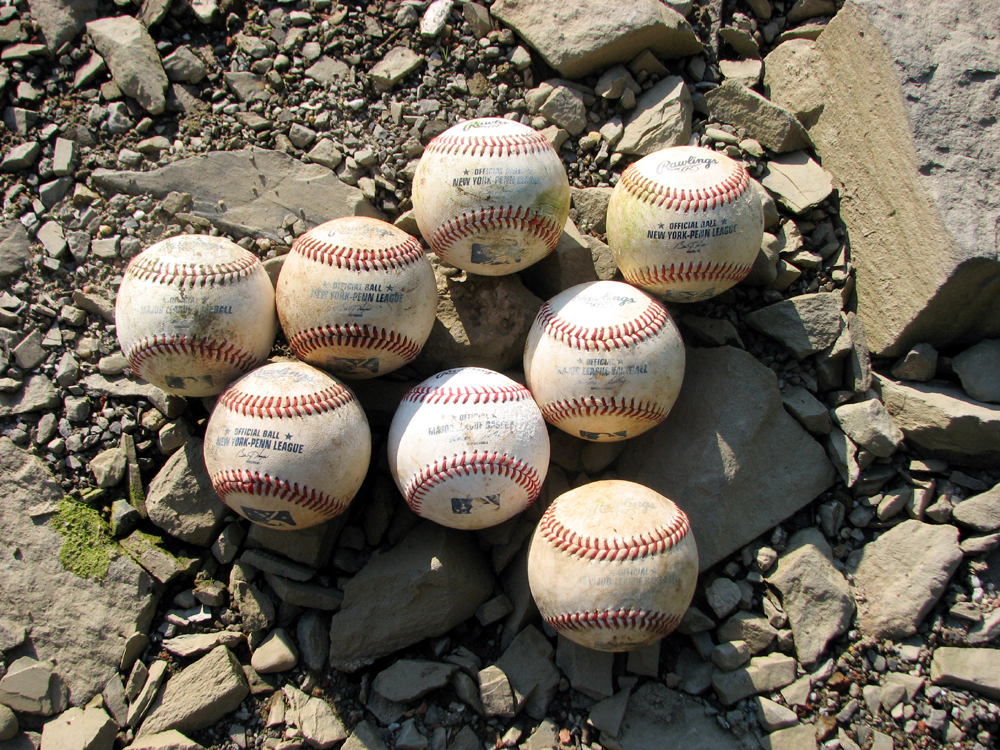
Here are some tips to keep in mind if you want to snag baseballs behind the outfield fence at a small ballpark.
Get There Early
If the early bird gets the worm, the early fan definitely gets the baseball(s) when it comes to snagging behind the outfield fence during batting practice. Getting to the ballpark early is one of your best strategies for ending up with a ball or two. Gates at MiLB parks generally open an hour before first pitch, and BP has wrapped up by then. While different teams take different approaches to BP, sessions are about 45 minutes each. This means: If a game is scheduled for 7 p.m. and the gates open at 6 p.m., batting practice will often begin between 4 and 4:30 p.m. If you get in position behind the fence as the hitting begins, you’re virtually guaranteed to get a baseball.
Stand Back — Waaaay Back
The easiest and safest way to get baseballs is to stand a considerable distance behind the fence. This is important for two reasons. First, the farther back you are, the better you’ll be able to see a wider area. This means that if a ball lands 100 feet on either side of you, you’ll likely notice it and be able to run and retrieve it. Second, if you’re immediately behind the fence, it’s simply too hard to react in time to balls as they fly toward you. I’ve legitimately been freaked out a few times as balls that I haven’t seen coming have zipped past my head. There’s no need to be a hero and try to catch baseballs on the fly. It’s a better strategy to watch them land from a safe distance and then go grab them.
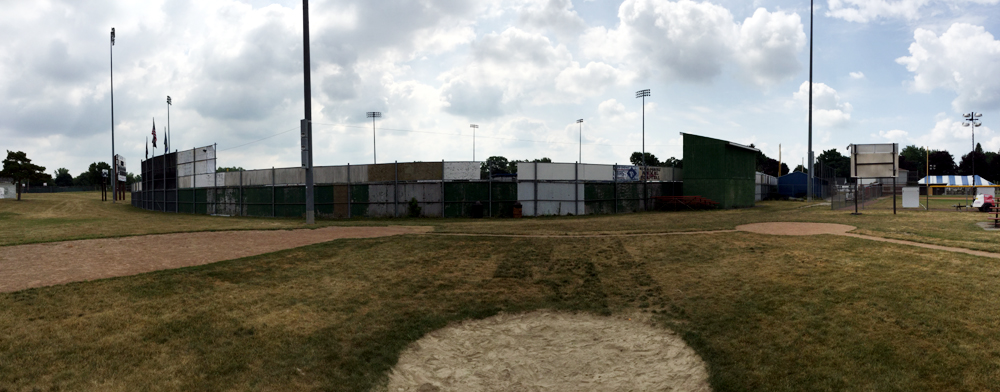
Find Your Own Space
I’ve had a number of experiences in which I’ve been the only fan looking for baseballs behind the outfield fence. There are times, however, that you’ll encounter others who have the same goal as you. It makes little sense to go stand a few yards from a group of other fans, but I’ve repeatedly seen this behavior. Even if most of the balls are landing in a certain area — behind the left field fence, in all likelihood — it’s a good idea to go find your own space. While several fans compete for balls in one area, you might have an easy time snagging other balls elsewhere.
Take A Peek When You Can
Outfield fences can vary across the minor leagues. At smaller parks, where you’ll have your best shot of snagging a baseball behind the fence, plywood is often the fence material of choice. This, of course, means that it’s virtually impossible to see through to the field. Sometimes, though, you’ll find ways of getting a peek — which can help your chance of success. For example, if you stand beyond either foul pole, you can sometimes look down the baselines toward the plate, as the fences are shorter in this area. This can allow you to watch the hitters getting ready to enter the cage, which can be a good strategy. If you’re in left field and you see a pair of lefties about to start hitting, racing over to right field will yield a better chance at a ball because of a higher probability that home runs land in this area.
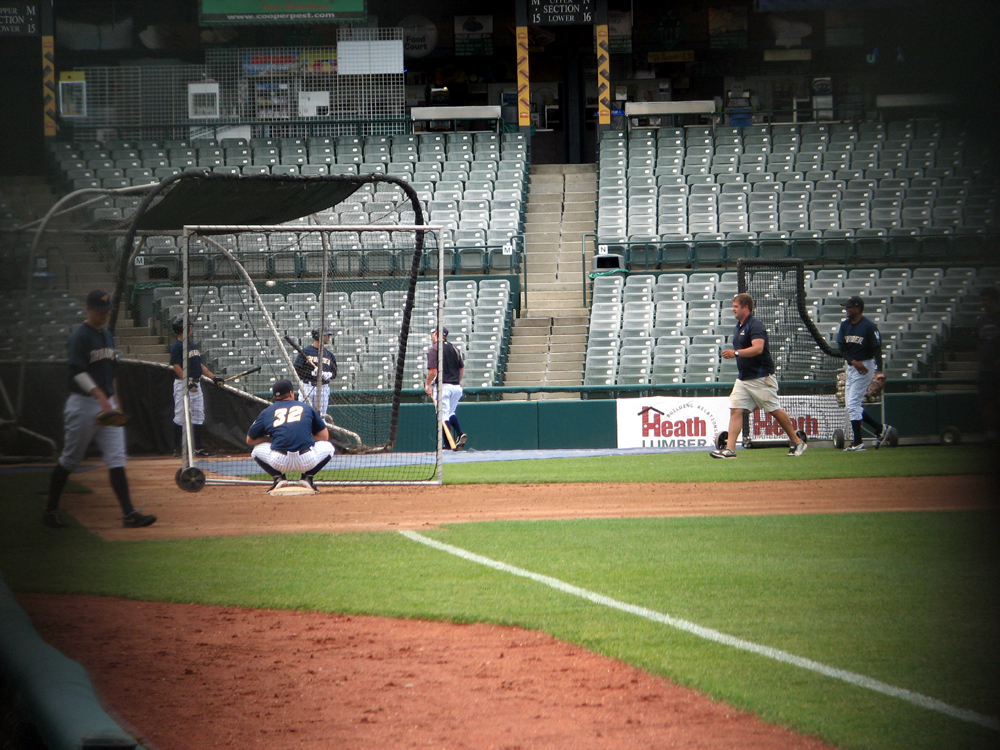
Check Out The Base Of The Fence
Standing back from the fence is important for increasing your field of vision and staying safe, but being too far away from the fence might cause you to overlook a baseball or two. Once BP has ended — you’ll be able to tell because the cracks of the bats will stop — approach the fence and look right at its base. Logic might suggest that no balls would end up in this spot, but that’s not always the case. If a ballpark has an elevated section of signs above and behind the fence, lots of balls will hit the signs and bounce toward the fence.
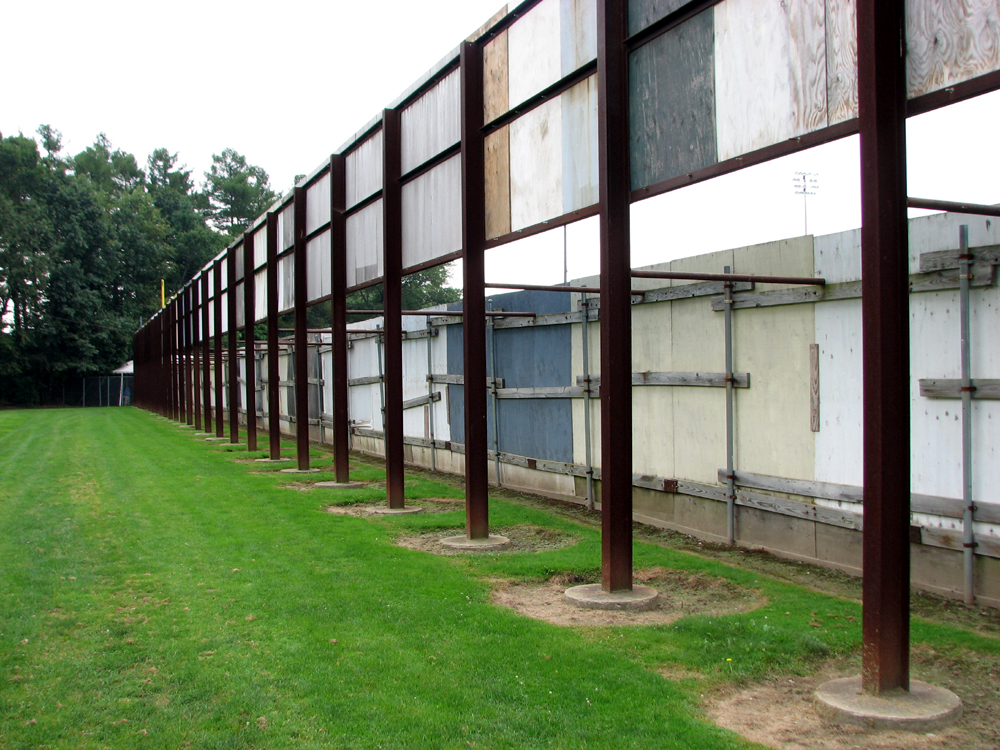
Don’t Be Conspicuous …
MiLB teams have all sorts of mindsets about dealing with baseballs that leave the park. Some teams have interns roaming the area behind the fence to retrieve balls as they land. Other teams send staff members out to pick up balls after BP is over. And, of course, there are teams that don’t do anything to get the balls back. If you get the vibe that the team doesn’t want fans snagging baseballs, you don’t want to be conspicuous. Standing in the middle of the field with your baseball glove and a duffel bag on the ground attracts attention. Instead, you’re better off playing it cool. Think about walking back and forth through the area as though you’re heading somewhere — and, hey, if you just happen to come across a baseball and pick it up, so be it.
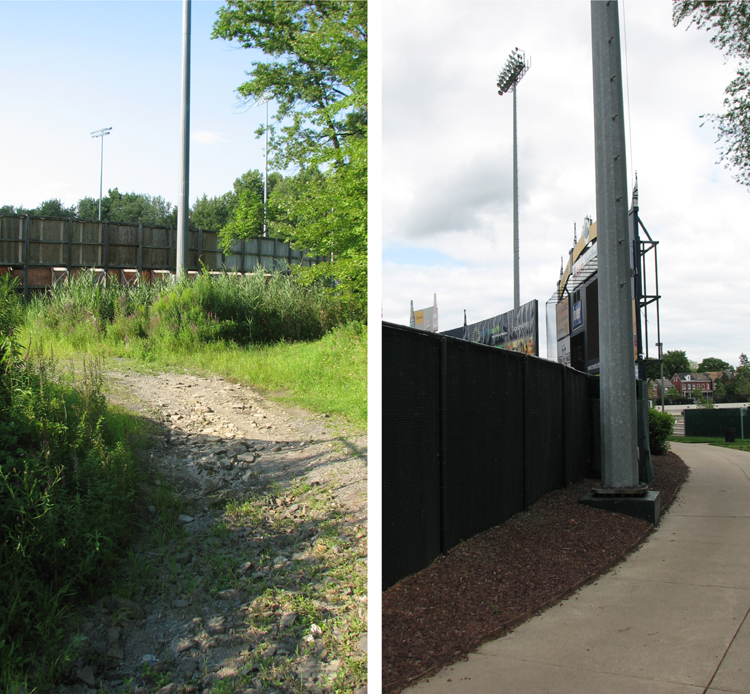
… But Don’t Act Guilty, Either
Given that some teams aren’t keen on fans engaging in this practice, it’s easy to feel as though you’re doing something wrong. But unless there’s a sign that forbids fans from being behind the fence or picking up baseballs, there’s no need to act as though you’re breaking a rule. When I was in Binghamton in 2017, I had just snagged a baseball when I heard someone yell at me from across the parking lot and begin walking toward me. Uh-oh, I thought. The person turned out to be the Rumble Ponies owner, who had heard about my visit and was welcoming me to the ballpark. I’d have felt like quite the fool if I’d acted like I’d been doing something wrong and scurried away.

Don’t Be Afraid To Get Dirty
While you should never do anything that puts yourself at risk of injury or that breaks a ballpark rule, you shouldn’t be afraid to look for baseballs where the terrain is a little rugged. Sure, you’ll find balls on the grass or on the asphalt, but if there’s an overgrown area nearby, you can generally expect to strike gold in this area, too. Tall grass, shrubs and other foliage can all be good hiding spots for a baseball.
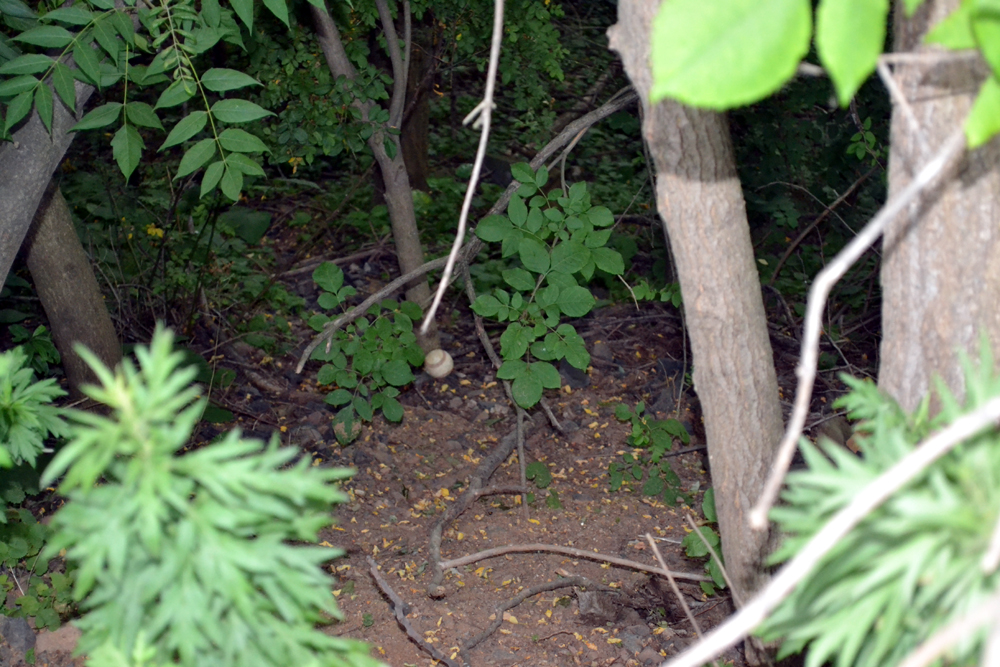
Have A Way To Block The Sun
It might sound simple, but you’ll definitely want a way to block the sun when you’re standing behind the fence. You’ll spend a lot of your time staring into the sky to watch for baseballs, and while wearing a hat and blocking the sun with your glove can work in a pinch, having a pair of sunglasses will make this adventure a lot more pleasant. (And speaking of the sun, don’t forget your sunscreen, either. I’ve gotten some major burns over the years standing out in the full sun for an hour or more.)
Don’t Forget To Look Far Away
When a home run baseball lands on the grass behind the outfield fence, it generally rolls a few yards and then stops. If there’s a paved area behind the fence, you can expect that baseballs will travel much farther. Don’t be afraid of looking for balls far behind where you might expect to find them. On numerous occasions over the years, I’ve come across balls that are much farther away than I thought would be possible.
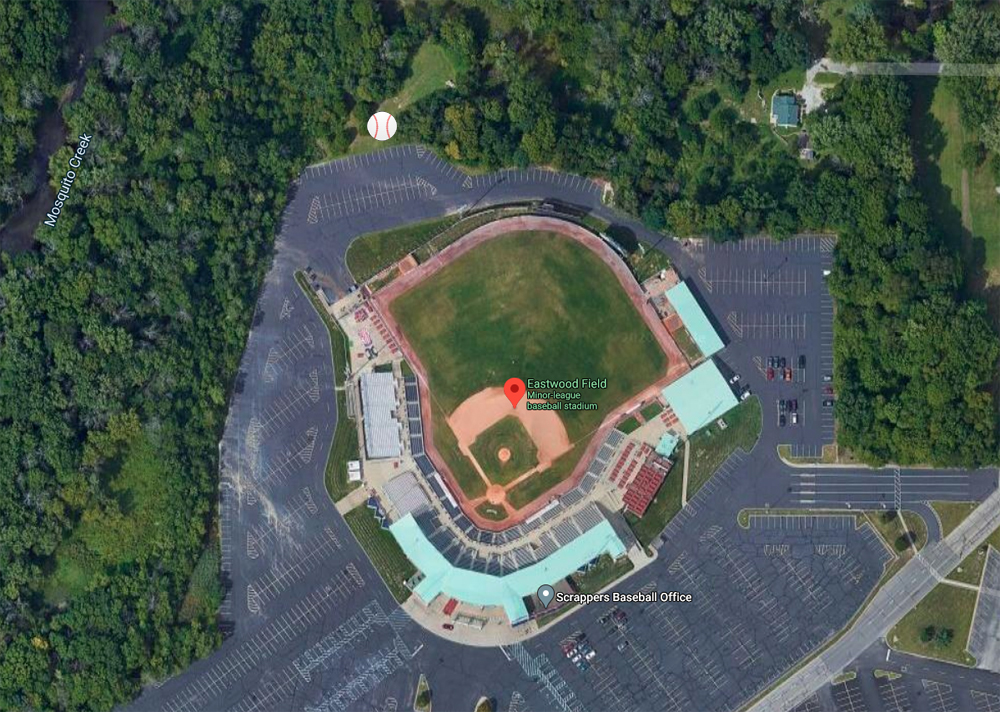
Give One Away To A Child
If I’ve been successful in getting some baseballs during BP, one thing that I like to do is give one or two of them away to children inside the park. You don’t need to keep every ball that you snag, and handing one to a child who’s seated near you can enrich his or her game experience exponentially.
Leave Your Baseballs In The Car
Something that might not cross your mind is what you’ll do with the baseballs after batting practice ends. If you’ve placed them in your backpack, you might instinctively head into the ballpark once the gates open. It’s a better idea to drop off the baseballs in your vehicle before you enter the park — especially if you managed to get a bunch. (Of course, carrying a few with you to give away to a child and/or get signed by players is a good idea.) A baseball weighs a little over five ounces. On its own, this isn’t a lot. But, let’s say you had good luck and managed to snag a dozen baseballs. You’ll be carrying around nearly four extra pounds in your backpack. This weight might not seem like a lot, but your shoulders will feel it by the end of the game.
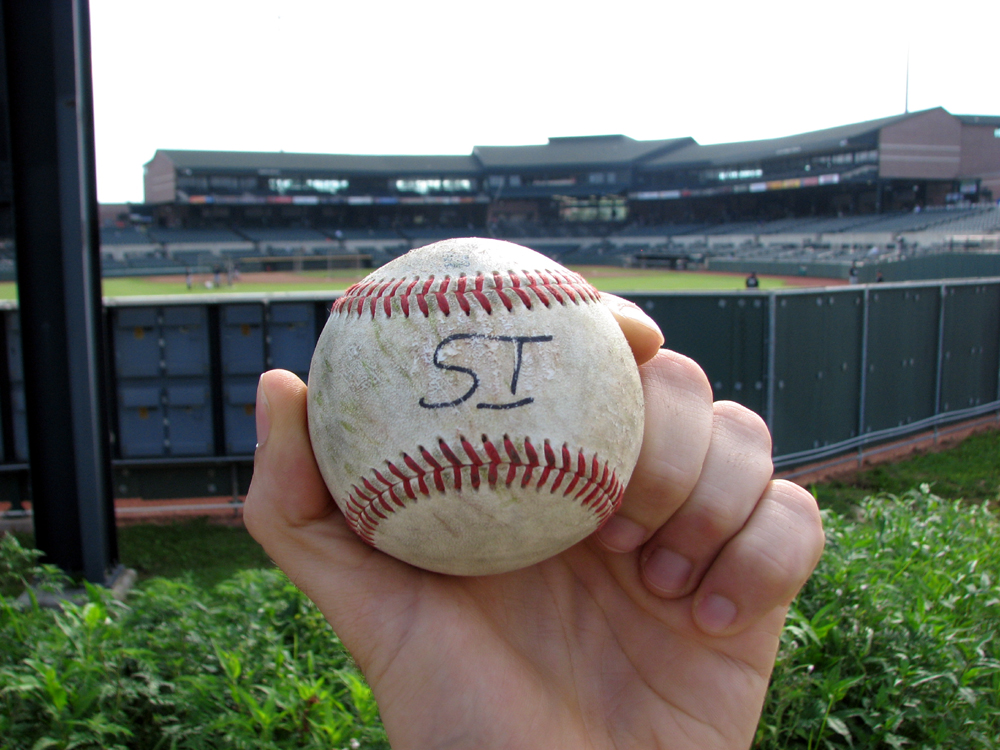
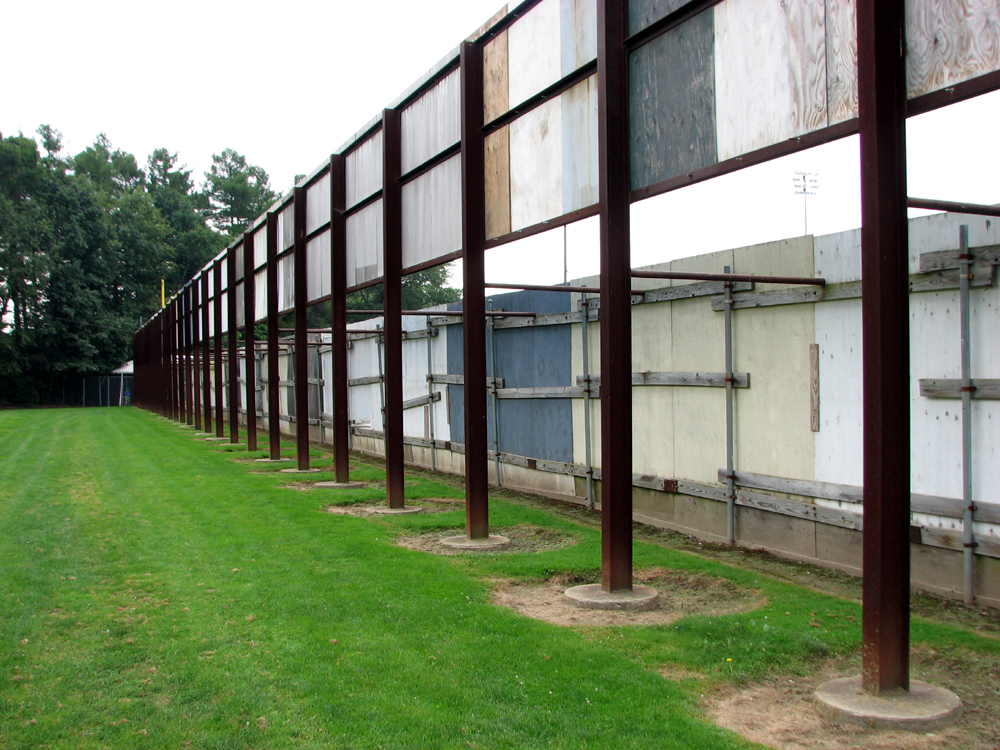
You must be logged in to post a comment.